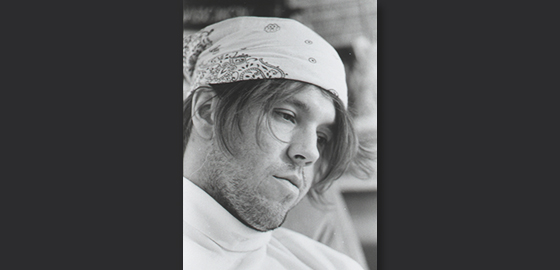Every Love Story is a Ghost Story: A Life of David Foster Wallace
D.T. Max
356 pp. Viking
On an imaginary scale of internal discomfort for David Foster Wallace (measured zero to 10), the idea of his being subject to a biography would likely have rated nine point something.
Perhaps the only thing that would have created more of an irritant for the one-time Illinois State professor would be one of his former students¹ reviewing that book. One can just imagine Dave (as he preferred his students refer to him) marking up the article with a barely-restrained critical eye, the page plastered with “WC’s” for poor word choice and scrawls of “CL!” for clunky, ill-formed sentences. And of course there would be the inevitable critiques of grammar that would not meet muster of Wallace’s ability to internally diagram sentences with ease.
In public and in person, DFW would often downplay his talent/literary accomplishments/impact with a self-deriding Midwestern humility. It’s not like Dave did not have a healthy ego. And it’s not as if he did not think his work was important. No one writes a 1,079-page book, like Wallace’s Infinite Jest, without something to say. Or several things. Or everything.²
But it’s not humility that would have caused the sandpaper to the literary hero’s psyche. Wallace’s discomfort with the writing and publication of the biography Every Love Story Is a Ghost Story would be that the very concept pushes what was one of his most sensitive buttons. Brilliant, hugely talented and often very charming, Wallace was also wracked with self-doubt. It was readily apparent that the 1,079 pages of Infinite Jest were fueled by biography. Yet the inward-facing eye was also a critical one. He was the type of person who would be self-absorbed and then also self-conscious about being self-absorbed. He often took the worst of it and put it on paper.
The result of steadfast and enthusiastic reporting by its author, D.T. Max, Every Love Story is a Ghost Story shows us the battling sides of Wallace’s brain best through excerpted letters Dave wrote to friends such as Jonathan Franzen and Don DeLillo. The letters often display seemingly effortless and stunning rhetorical panache while still expressing an informal degree of vulnerability and, often, neediness.
The book also hits lowlights of personal relationships, drug use, and the sad effects of crippling depression. So much so that the subject’s history and biography challenge the concept that Dave, at his best, championed: compassion and humanity.
The biographer gets many familiar details into the Bloomington-Normal section: Dave’s disdain of classrooms with florescent lighting, the chewing tobacco and spit cup, his dogs Jeeves and Drone, and, of course, the ubiquitous wearing of the bandana³.
There is, of course, a continued thread of relationship troubles and wince-inducing personal details that Max notes during the “Illinois State years.” [4] But the biographer infers that this may have been personally, professionally and humanistically some of best years of Wallace’s life. During that time, Infinite Jest was completed and published, to great acclaim. Wallace was awarded a MacArthur Foundation “genius grant,” which not only was a form of validation for his literary labors but also created some welcome financial space to someone who once told me took his teaching job “for the health insurance.”
Max illustrates that the Illinois State job and the “Bloomington years” were more than that, however. Wallace took his classroom role seriously, something most likely engrained by his mother, a lifelong teacher who wrote the grammar textbook Practically Painless English. And he was back home in the Central Illinois plains where he had grown up. Far enough away from his Champaign County resident parents as to not be an obvious return to the roost, but in a world where he could, most likely, feel safe. The conjecture of the previous sentence is mine. Max does not always quite venture that close to putting thoughts into his subject’s head. However, the trials and tribulations of destructive obsessions with women, stints in a rehab halfway house, and at least one nervous breakdown documented prior to this point of Max’s book and the spiraling depression noted afterward, indicate as much.
Like a lot of David Foster Wallace’s work, this is a sad book. Less because it reveals the isolation and inscrutability of modern life that Dave was always trying to reconcile, but instead because we know the ending.
In life, as in art, no amount of endnotes provided answers for Dave Wallace. I wish he were still here to write more of them.
Steve Fast ’94 is a Department of English graduate who now works for the University of Illinois Press. He also hosts The Steve Fast Show on WJBC AM-FM. He lives in Bloomington.
Footnotes:
1. Me.
2. “Sentence fragment.”
3. I thought for one year “this is a man who is obviously going bald,” although that wasn’t the case.
4. Quotes mine.


Very interesting! As a recent graduate from the English department (2010) I love hearing stories about DFW’s time at Illinois State. Even though he left the university many years before I started his specter still crept into several of my classes.